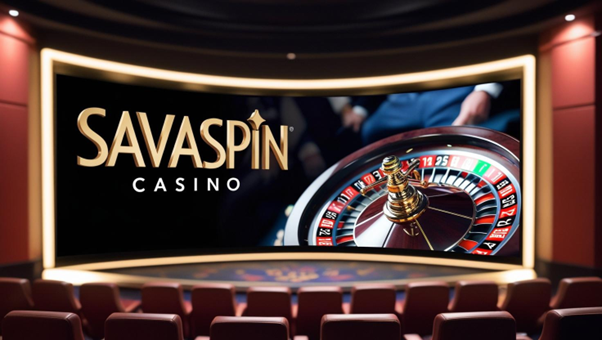Prologue: The Flicker Before the Fortune
There’s something cinematic about a gamble.
The ticking silence before a roulette wheel stops. The glint in a poker player’s eye. The gasp from the crowd when the last card turns over. It’s not just tension — it’s narrative tension. And it’s everywhere.
From noir thrillers to Netflix dramas, from classic films to contemporary series, writers return again and again to the casino. Not because of the chips or the cards — but because gambling offers what every great story needs: stakes, transformation, and the illusion of fate.
This article explores how the “big win” myth functions in screenwriting — and why audiences continue to crave stories where everything can change in a single spin.
1. Gambling as Compressed Drama
Gambling scenes offer writers a shortcut to instant tension. Within moments, we know:
- What’s at stake
- Who wants what
- Who’s bluffing
- And who’s about to lose it all
Unlike a slow-burning romance or a gradual political arc, a gambling moment accelerates time. The drama unfolds in real-time — sometimes in a single breath.
Writers use this to amplify pace, but also to reveal character: how someone behaves under pressure speaks louder than a thousand backstory monologues.
2. The Big Win as Modern Myth
The “big win” has become a kind of cultural fairy tale.
It promises that:
- The underdog can rise
- Luck can rewrite destiny
- One moment can erase a life of disappointment
It’s the hero’s journey in fast-forward — except instead of a sword, the hero wields a bet.
And instead of slaying dragons, they face the spinning wheel or stacked deck.
Films like Casino Royale, Uncut Gems, or Rounders understand this. So do screenwriters who build arcs around the myth of reversal: one shot to turn it all around.
This myth mirrors real-life stories — and platforms like Savaspin Casino play with that edge, offering players games that flirt with transformation.
3. From Luck to Character: Gambling as Moral Mirror
Great stories don’t rely on luck — they interrogate it.
In well-written screenplays, gambling becomes a moral filter:
- A selfish character wins — and loses everything else
- A desperate player bets the rent — and faces the consequences
- A cautious gambler folds — and misses their one chance
Gambling reflects internal conflict.
It forces characters to choose who they are, not just what they want.
This is why writers often place key decisions at the card table. It’s not about the game — it’s about the person playing it.
4. High Stakes, Real Emotions
Whether in a gritty indie or a glossy Hollywood blockbuster, gambling scenes allow for raw emotion:
- The crushing silence of loss
- The euphoric disbelief of a win
- The slow burn of watching someone spiral
These emotions are universal — even if you’ve never placed a bet.
That’s part of the appeal of platforms like Savaspin Casino: while players may seek entertainment, the emotional architecture of chance remains. Writers know this — and mine it to create scenes that stick long after the chips are gone.
5. Cinematic Archetypes Born at the Table
Certain character types recur in gambling-centered stories — not by accident, but because they serve essential narrative functions:
- The Maverick: confident, reckless, emotionally guarded
- The Desperate: on the edge, willing to risk too much
- The Calculated Strategist: cool, mathematical, often hiding pain
- The Innocent: new to the game, drawn in by charisma or need
Each archetype brings a different kind of energy to the screen. Their interaction — win or lose — creates friction, escalation, and (often) tragedy.
When users engage with personalities or avatars on platforms like Savaspin, echoes of these same archetypes persist — even in virtual form.
6. Set Design of Suspense: Casinos on Camera
Cinematographers love casinos. The lighting, symmetry, and color create a perfect visual metaphor:
- Glamour and decay
- Hope and entropy
- Order and chaos
Writers and directors use this backdrop to enhance narrative contrast — the bright lights masking dark truths.
Whether it’s a sleek poker room or a smoky underground den, the set becomes a character itself — one that watches, waits, and often punishes.
Savaspin Casino and other digital platforms borrow this aesthetic — using neon, motion, and rhythm to evoke cinematic immersion.
7. The Anti-Hero’s Playground
In many modern screenplays, the casino is not a place of redemption — but a stage for the anti-hero.
This character doesn’t seek justice or love — they seek release, rush, distraction, or escape.
- Think of Howard Ratner in Uncut Gems, unable to stop
- Or Sydney in Hard Eight, teaching poker but haunted by his past
- Or even Bond, wagering as much emotionally as financially
These characters reflect a darker truth: that gambling isn’t always about winning — it’s about feeling alive.
Savaspin, in turn, builds systems that let players tap into high-stakes thrill with balance tools — offering adrenaline without recklessness.
8. The Ending Is Rarely the Win
Here’s the secret screenwriters understand: the best gambling stories rarely end with a jackpot.
They end with:
- Growth
- Despair
- Escape
- Or a haunting return to the table
Because what matters isn’t the outcome — it’s who they became along the way.
Just as players return to the reels or the cards not for the win, but for the possibility, audiences return to these stories for the same reason: they reflect our own risks — emotional, financial, existential.
Final Reflection: Storytelling, Chance, and the Unwritten
Gambling is more than numbers. It’s narrative potential.
A card, a bet, a turn — they’re all moments where everything might change. Where character collides with chaos. Where fate seems negotiable.
Screenwriters know this. That’s why they write casinos not as backdrops — but as crucibles.
And platforms like Savaspin Casino, while built for entertainment, carry that same DNA: a space where risk and story dance side by side.
In the end, the myth of the big win isn’t about money.
It’s about meaning — found in the suspense, the surrender, and the spin.







